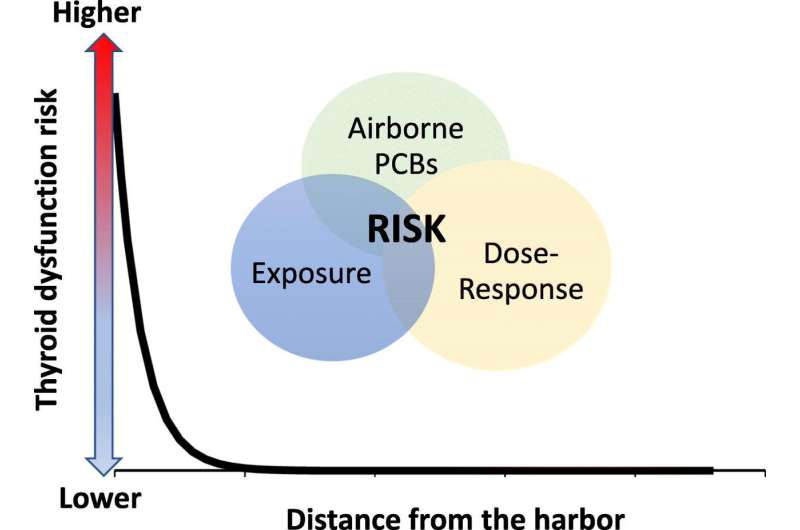Potentially harmful air contamination near New Bedford Harbor

A new Boston University School of Public Health (BUSPH) study indicates that the contaminated water of New Bedford Harbor may pose an airborne health hazard for residents living nearby in Acushnet, Dartmouth, Fairhaven, and New Bedford. The U.S. Environmental Protection Agency (EPA) declared the southeastern Massachusetts harbor a Superfund site and has been cleaning up sediment contaminated with polychlorinated biphenyls (PCBs) since the 1990s, focusing efforts on PCB levels in the sediment and in fish consumed from the harbor, and associated cancer risks.
But the new study, published in Science of the Total Environment, is the first to estimate the non-cancer health effects of breathing airborne PCBs around the harbor, namely thyroid hormone effects.
"Residents have been concerned about the air for over a decade. Our study shows that they are correct to be concerned," says Dr. Wendy Heiger-Bernays, the study's corresponding author and a clinical professor of environmental health at BUSPH. "It also indicates that it's important to monitor the PCBs in air as a measure of a successful cleanup."
By request from community members, the researchers previously measured airborne PCB levels in various locations around the harbor in 2015 and 2016, including during a period of hydraulic dredging as part of the site's cleanup. For the new study, the researchers estimated the health effects of these measurements. The EPA has no published guidelines for the amount of PCBs in air that might be safe to breathe, so the BUSPH team used evidence from other researchers' rodent studies to develop a human-equivalent estimate of the likelihood of different levels of airborne PCB exposure to cause "unreasonable risk" as the EPA defines it. They found that the airborne PCB levels were high enough to potentially affect the thyroid hormones of residents, particularly those living within 625 meters (0.4 miles) of the harbor.
"In addition to cancers, residents have been very concerned about other health problems that are not typically considered by health agencies when regulating exposures," says Dr. Madeleine Scammell, associate professor of environmental health at BUSPH and co-lead of the study. "Although clean-up of the harbor is nearly complete, and some may feel this is 'too little too late,' we hope our results can inform other settings where inhaled PCBs are a risk, so that subtler human health risks are factored into the equation."
Journal information: Science of the Total Environment
Provided by Boston University School of Medicine



















